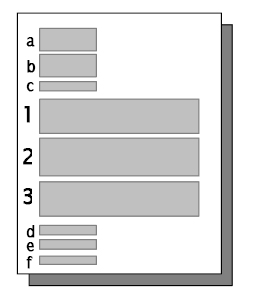|
|
 |
| |
| |
|
| |
The
cover letter is usually the first thing the hiring manager
sees, and is one of the best tools to make a positive
first impression.A good covering letter gives you the
chance to stand out from the crowd and ensure that your
CV is placed on the definite ‘interview’
pile.
Competition for jobs is increasingly tough; your CV
or application form will be one among many and your
competitors may well have the same qualifications, relevant
skills and equivalent experience, as you. So think of
your cover letter as an opportunity to reinforce your
CV and tell the employer: why your skills match their
needs, why you admire their company or product range
and why you want the job. |
| |
|
| |
Writing
Cover Letter |
| |
|
| |
 |
| |
A. Your Info
Begin with your return address and, below it, the date.
|
| |
B. Their Info
The name, title, and address of the contact person. (Do
whatever you can to find this info out - it is best to
avoid a generic 'Dear Sir/Madam'). |
| |
C. Salutation
(Dear.) followed by a colon " : " (without the
quotes). If you are writing to a man, use the title 'Mr.',
and if a woman, use 'Ms.' In the event of a gender neutral
name like Pat, or an unfamiliar name of foreign origin,
contact the company and find out whether the person is
male or female. A possible alternative is to give the
full name (e.g. 'Dear Pat Sykes,') |
| |
1.
Opening
This is where you capture the attention of the reader.
Give the name of the position you are applying for (and
perhaps indicate how you learned of the vacancy –
did someone tell you about it? Who? Did you see an ad?
Where?)
Most
importantly, though, you should give an outline of the
specific reasons you feel you are ideal for this job
in this company. Do not wait until paragraph 2 to begin
selling yourself: start doing it here. Rather than saying
‘My skills and experience make me qualified for
this position,’ specify which skills and which
experience. Remember, specifics are always more compelling
than generalities, and the goal is to get the reader
leaning forward, eager to learn more about you in the
next paragraph. |
| |
2. Body Paragraphs
This is where you go into detail, depicting yourself as
a serious candidate and one well worth inviting in for
an interview. It is generally a good idea to get the hard
details about yourself (specific skills; history of responsibility,
success, meeting challenges, etc.) above ‘softer’
details like personality traits, attitude, and values.
Think hard about ways you can reinforce
an image of yourself that includes as many of the desired
qualities as possible. And do not allow a claim about
yourself to go unsubstantiated. Don’t just say
you are ‘detail oriented,’ give the reader
an example of something in your history that proves
it; rather than claiming to be ‘motivated,’
make the reader believe this about you by drawing on
real experience. Show, don’t tell. Remember, you
are trying to set yourself apart from the other applicants;
anyone can claim to be ‘hard-working,’ but
only a truly hard-working person can prove it.
Do not simply regurgitate the contents
of your résumé. You should certainly refer
to it, but do so with a view to expanding on areas that
require expansion. It is also acceptable (desirable,
even) to refer to things that did not make it onto your
résumé, if you feel they strengthen your
case.
Wherever possible, emphasize how you
will benefit the company. If you write too much about
how you will benefit from being hired (‘I hope
to learn a great deal about the industry’) then
you will be calling attention to the gaps in your experience
and knowledge.
Do what you can to demonstrate that
you are well-rounded: if every point you make about
yourself is drawn from, say, your educational background,
the reader might come to think of you as narrowly focused;
if possible mix it up so that you demonstrate your three-dimensionality.
|
| |
3.
Closing Paragraph
Normally just a few lines in length, this is where you
express your strong interest in the position and express
your desire to discuss your application further in an
interview. Try to strike a balance between excessive
force and excessive restraint. You might also consider
giving a brief summary here of the key points in the
letter above, but avoid simple repetition for its own
sake. |
| |
D. Closing
A complimentary closing, such as 'Sincerely Yours' or
'Kind Regards.' |
| |
E. Big Space
Leave a quadruple space for your signature, and type your
full name. |
| |
F. Attachments Note
If you are attaching your résumé, indicate
this fact by writing, 'Attachment: Résumé'
(The two documents sometimes get separated, so including
this line signals that at some point the cover letter
was accompanied by a résumé).
|
|
|
 |
|











